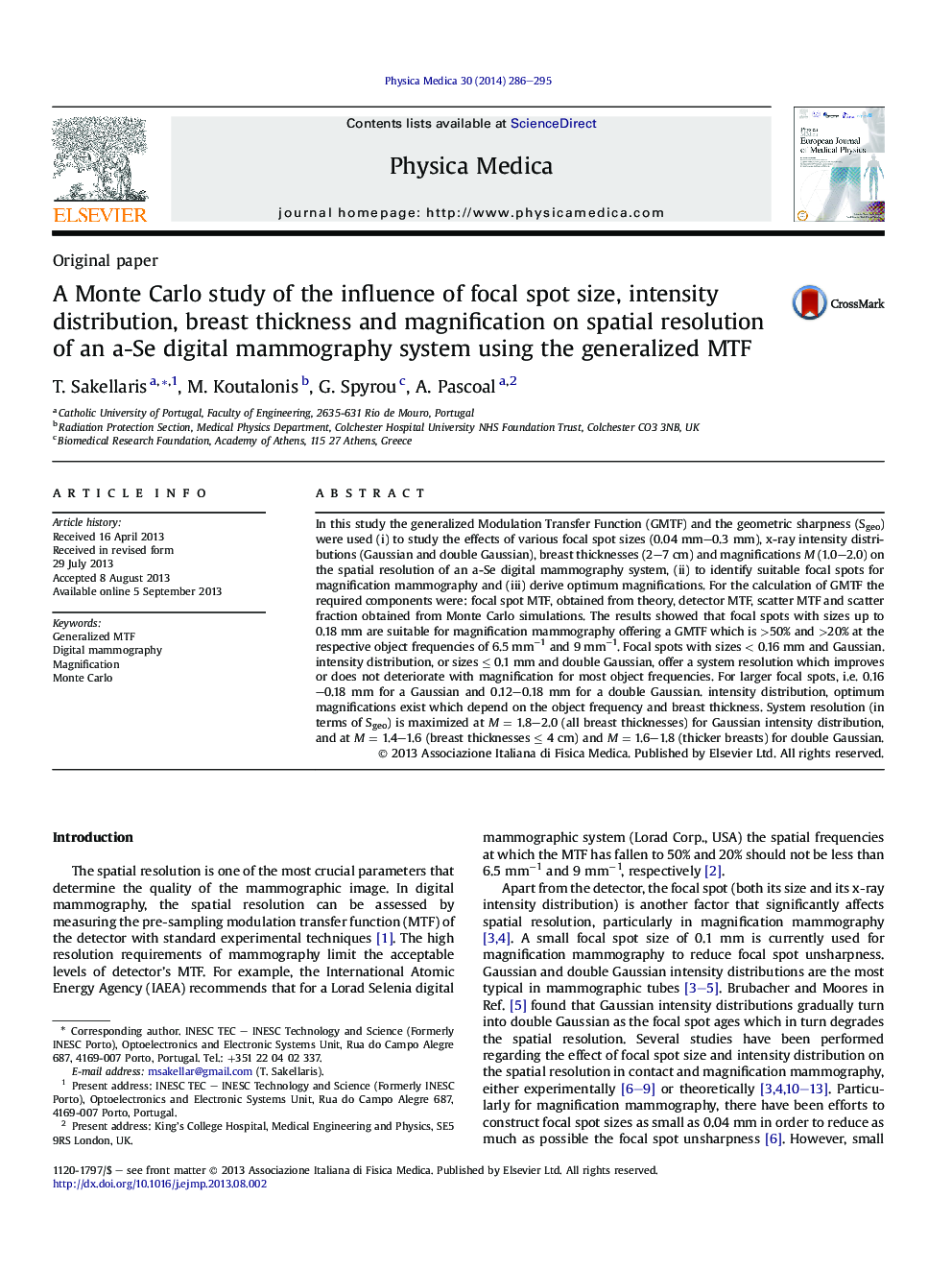| Article ID | Journal | Published Year | Pages | File Type |
|---|---|---|---|---|
| 10731585 | Physica Medica | 2014 | 10 Pages |
Abstract
In this study the generalized Modulation Transfer Function (GMTF) and the geometric sharpness (Sgeo) were used (i) to study the effects of various focal spot sizes (0.04 mm-0.3 mm), x-ray intensity distributions (Gaussian and double Gaussian), breast thicknesses (2-7 cm) and magnifications M (1.0-2.0) on the spatial resolution of an a-Se digital mammography system, (ii) to identify suitable focal spots for magnification mammography and (iii) derive optimum magnifications. For the calculation of GMTF the required components were: focal spot MTF, obtained from theory, detector MTF, scatter MTF and scatter fraction obtained from Monte Carlo simulations. The results showed that focal spots with sizes up to 0.18 mm are suitable for magnification mammography offering a GMTF which is >50% and >20% at the respective object frequencies of 6.5 mmâ1 and 9 mmâ1. Focal spots with sizes < 0.16 mm and Gaussian. intensity distribution, or sizes â¤Â 0.1 mm and double Gaussian, offer a system resolution which improves or does not deteriorate with magnification for most object frequencies. For larger focal spots, i.e. 0.16-0.18 mm for a Gaussian and 0.12-0.18 mm for a double Gaussian. intensity distribution, optimum magnifications exist which depend on the object frequency and breast thickness. System resolution (in terms of Sgeo) is maximized at M = 1.8-2.0 (all breast thicknesses) for Gaussian intensity distribution, and at M = 1.4-1.6 (breast thicknesses â¤Â 4 cm) and M = 1.6-1.8 (thicker breasts) for double Gaussian.
Related Topics
Physical Sciences and Engineering
Physics and Astronomy
Radiation
Authors
T. Sakellaris, M. Koutalonis, G. Spyrou, A. Pascoal,
